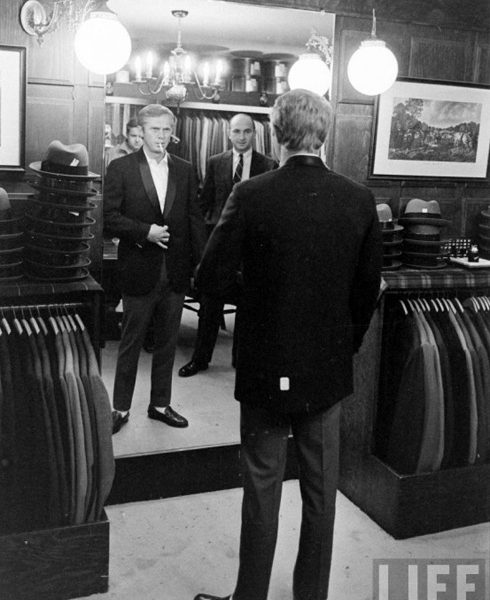
When you’re shopping for clothes, there are probably a dozen or more variables to consider before you make a purchase. Unfortunately, most of these considerations can get muddled, and if you don’t parse them out carefully, you can buy something for the wrong reasons. So I thought I’d rank some of the principle considerations: fit, style, construction, and branding, in that order. When deciding whether or not to buy something, go through these considerations in order of importance and you’ll minimize your likelihood of ending up with buyer’s regret.
Fit
As they say, fit is king. The first thing anyone notices, even before style, is whether your clothes fit well. A man would look better in a well-fitting pair of jeans and a t-shirt before he would in a sloppy suit.
What fits is what flatters. This point may seem basic, but it’s amazing how rarely you see it practiced. Men who aren’t style conscious tend to wear clothes too big, while men who pay a lot of attention often wear things too small. Proper fitting clothes hit in the right places and give you clean lines, no matter what your movement or position. Shoulder seams should end around the shoulder bone, and clothes shouldn’t be so baggy that they fold, nor be so tight that they pull.
Style
Always remember that fit comes before style. There’s no quicker way to catch buyer’s regret than to buy something that’s stylish, but doesn’t fit perfectly. Once you find something that fits, however, consider whether the garment has all the design details you’re looking for. If you want something that will last, avoid things that veer too strongly towards one design trend. As a very general rule of thumb, I find simple, classic designs to be best.
You may also want to consider how versatile the garment is. Basic blues, greys, and browns will help you build in that versatility, as all those colors are easy to incorporate. To be sure, there’s a lot of room for dark greens, burgundies, and other livelier colors. However, make sure you’re not buying something that you can only wear with one pair of trousers or one jacket. You should seek to build a wardrobe, not a collection of outfits.
Construction
Some may be surprised that I rank construction so low on the list of considerations. However, a garment’s design will always be the bigger determinant of its lifespan. Most clothes are made to last at least a couple of years now. If a jacket is made with skinny lapels, for example, its style will give out much sooner than its cloth. Thus, while I strongly believe people should invest in higher quality purchases, I also think that they should prioritize fit and style above quality. If it doesn’t look good on you or work with the rest of your wardrobe, the quality of its construction will mean very little.
Branding
Finally, there is branding. Everyone succumbs to this to some extent. We buy clothes partly to express the person we are, and partly the person we wish to be. We may also buy something because of the lifestyle it represents. It may not be the most “rational” of considerations, but it’s no less real or enjoyable. Clothes in this sense are romantic; they make life less dull. It would be crotchety to deny or condemn it. At the same time, you should be aware of what you’re doing, and only do so if it meets the other criteria above.
Conclusion
Of course, ideally, you should make purchases that fulfill every one of these categories (with the exception of maybe branding). However, people have limited means, time, and patience for such things, and not everyone is going to spend the next few months searching for the perfect shirt. Thus, for the non-neurotic, you now have neatly parsed considerations that you can prioritize in order to make better buying decisions.
Purchase things for the right reasons. Buy something because it’s well-made before you buy into a brand; buy something well designed before you buy into its quality; most importantly, buy something because it fits well before you consider anything else.
